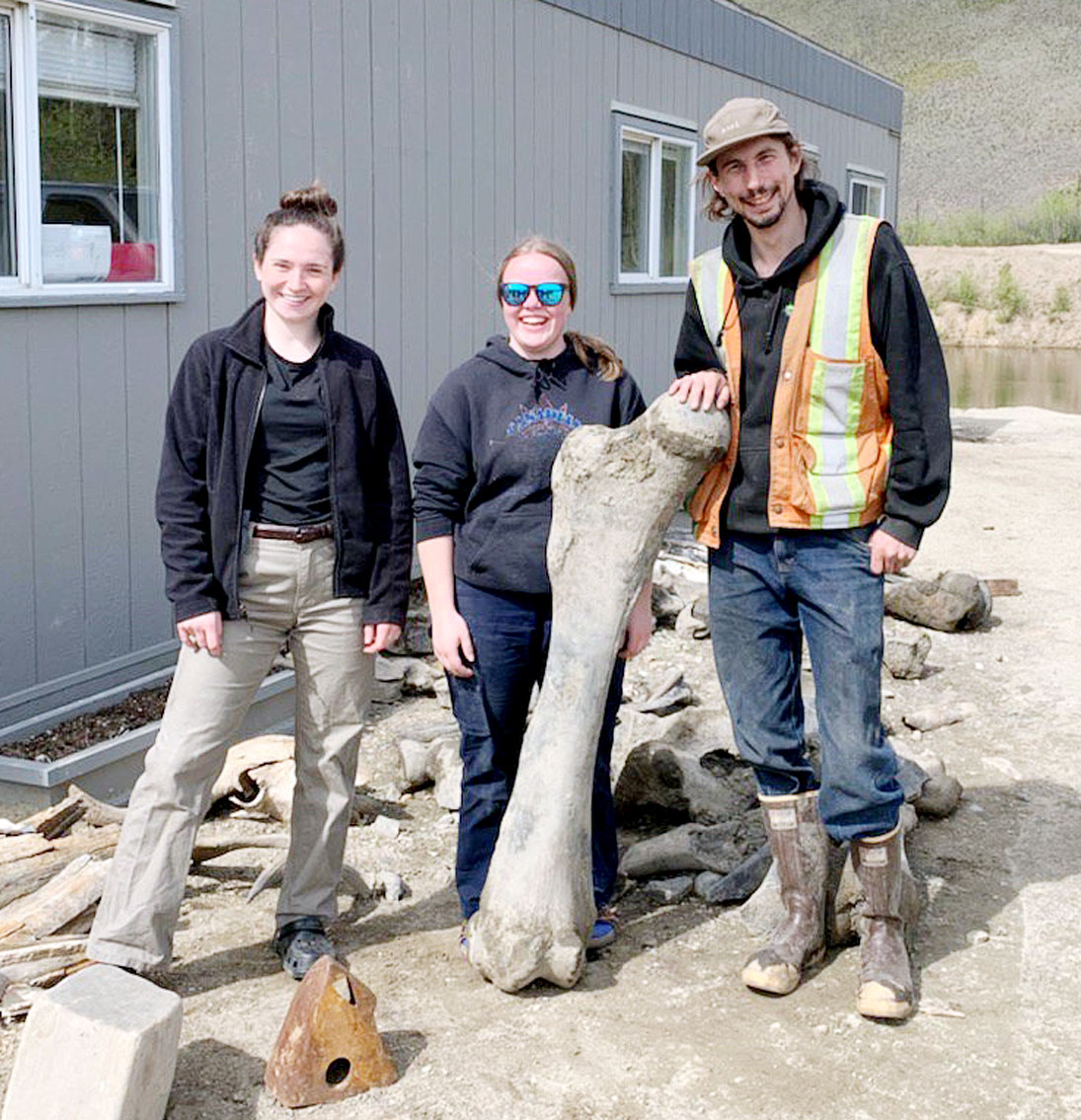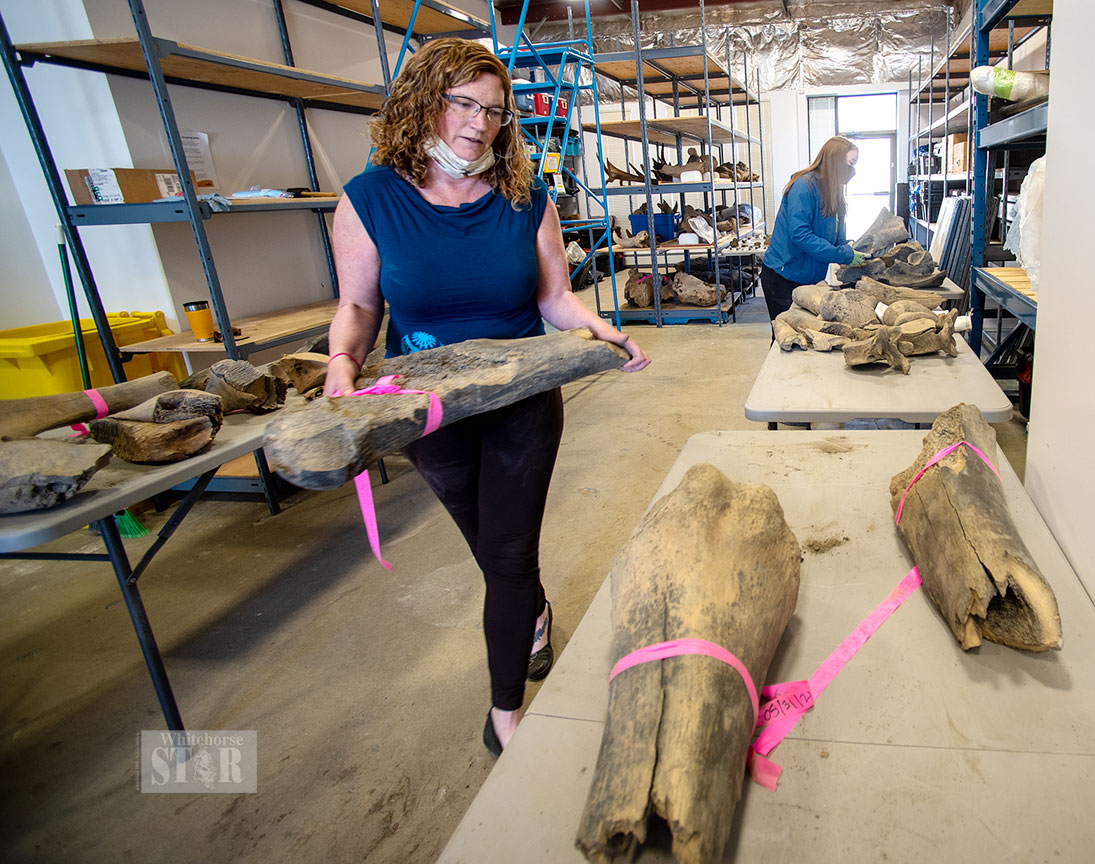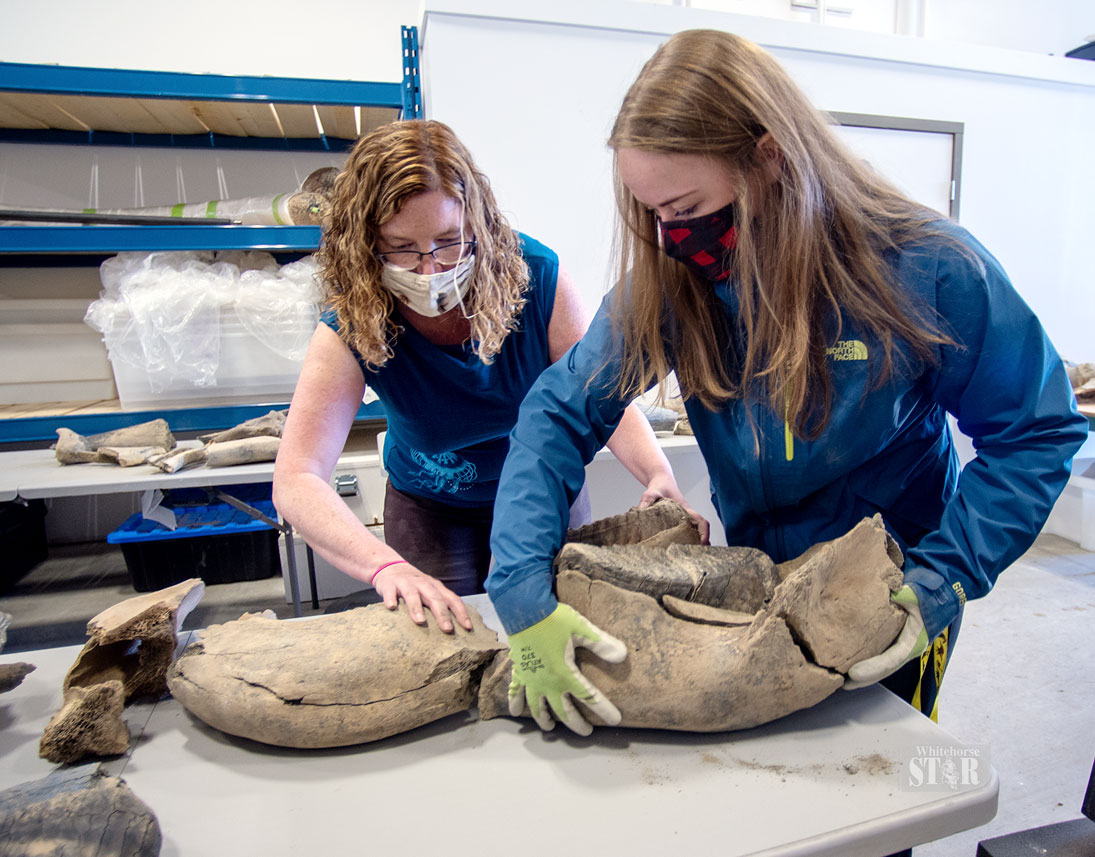Mammoth skeletons called ‘super-exciting’
Yukon paleontologist Grant Zazula is excited about the partial woolly mammoth skeletons unearthed recently at a placer mine along the Indian River.
By Chuck Tobin on June 11, 2021
Yukon paleontologist Grant Zazula is excited about the partial woolly mammoth skeletons unearthed recently at a placer mine along the Indian River.
He said placer miners in the Dawson gold fields come across individual fossil bones on a regular basis.
But to find partial skeletons intact is rare, he explained in an interview Thursday, adding it’s 100 times more rare to find them in
the same, exact location.
The skeletons were dug up May 27 by placer miner Trey Charlie working at the Little Flake Mining camp owned by Parker Schnabel, which is featured on the Gold Rush TV show.
The last partial skeleton to be dug up was on Dominion Creek in the early 1990s, he said.
Zazula said it was originally thought they had the skeletons of two mammoths. One, he estimated, was around 50 years old. The other was between five and eight years old.
“You never find a complete skeleton, so finding two partial skeletons, they probably died together,” he said. “That is super-exciting. It can lead to all kinds of questions.”
It’s quite likely, said Zazula, it was a mother mammoth and her teenage offspring.
The paleontologist said upon continuing investigation of the skeletons, it’s been determined they probably have bones from four or five woolly mammoths – two adults and two or three offspring.
Zazula said the work unravelling their story begins.
“We have all this material now, and now it is basically a detective story to determine what was going on.”
Determining how they died is part of the mystery, he said.
Zazula said samples from the skeletons will be sent to the DNA lab at McMaster University in Hamilton, Ont., to determine if the
mammoths were related.
Samples will also be sent to the University of California for carbon dating to confirm how old they are.
A paleontology summer student will be kept busy with the mammoth skeletons, he said.
Zazula says it’s likely the mammoths died some 30,000 years ago, as they were found in a layer of volcanic ash 30,000 years old.
Sample of the ash will be sent to the University of Alberta to confirm the age of the ash, he said.
The skeletons will be examined closely to see if there is any evidence of the mammoths being attacked by predators, such as claw or teeth marks left on the bones.
Bones recovered included a complete leg bone, pelvis and jaw bones with all the teeth.
“I suspect there is more at the site still frozen in the mud,” he said.
Examining the bones and teeth may help determine the mammoths’ diet, and whether the giant animals were in good shape.
He said when they were notified of the skeletons, a paleontology crew was sent to the mine site to assist with the recovery.
They will be at the site when mining continues to help identify and recover any more bones that are unearthed.
Zazula said the woolly mammoths came to the Yukon across the Bering Sea land bridge about one million years ago.
The oldest mammoth bones in North America – a million years old – were discovered on the Old Crow River, he said.
He said they became extinct in the Yukon about 11,000 years ago, but lived up until 4,000 years ago on some Arctic islands in Siberia.
There are plans to organize a public display of the bones this summer, perhaps as early as the end of this month, he said.
Zazula praised the placer miner for not only doing such a good job of unearthing the bones but also for his quick report to Zazula and the Tr’ondëk Hwëch’in government.
The First Nation is very much involved when it comes to paleontological discoveries inside its traditional traditional territory, he said.
Zazula said they encourage the miners to not only contact them when they come across bones but also to contact the First Nation.
Adult mammoths, a distant relative of elephants, can grow to a height of 11 or 12 feet, he said.
The paleontologist noted the fossil bone of a forearm from a short-faced bear was unearthed a couple of weeks ago.
“So it should be a really good summer with a lot of really great stuff,” he said.



Comments (4)
Up 1 Down 2
Cameron on Jun 27, 2021 at 8:20 pm
That's right Anthony, climate change has been a significant long-cycle event long preceding our time on the planet. However, if one doesn't ascribe to the narrative of the day, then you're deemed to be suffering from climate change denial. I would not foolishly deny climate change, however, it is not to be attributed to CO2, but rather, the 4th state of matter.
Up 4 Down 1
ANTHONY MAW on Jun 27, 2021 at 1:51 pm
Climate change and global warming have been happening since prehistoric times. Can we really try to stop it? Nobody cries over the extinction of the woolly mammoth!
Up 4 Down 1
David Doerr on Jun 27, 2021 at 12:48 pm
There is a good overview of the general paleontological situation in Alaska in Sir Henry Howorth's extremely detailed text, THE MAMMOTH AND THE FLOOD, that he published in 1887. The remains of the giant creatures were even found in Mexico. Something extremely catastrophic afflicted the planet, not long before the first cities appeared, some 5,000-plus years ago.
Up 37 Down 66
Wilf Carter on Jun 11, 2021 at 3:00 pm
This is great and Liberals and NDP want to spend $25 million to house these bones instead of housing the homeless, seniors, disability people, young families, or an average family. What's more important, people or bones to be housed?